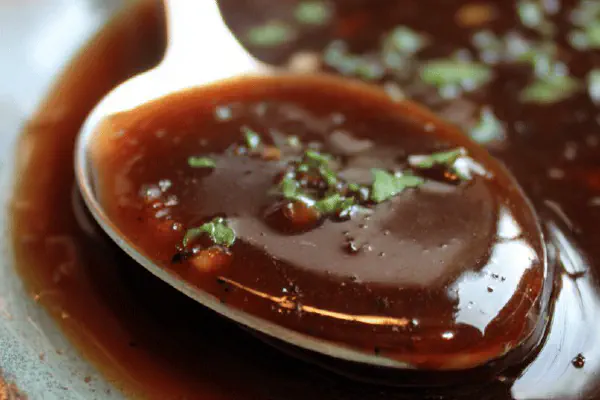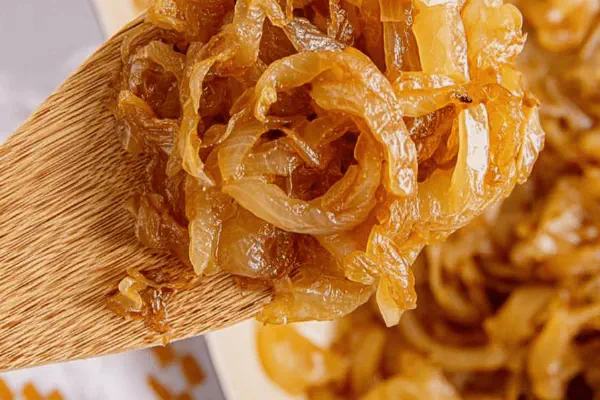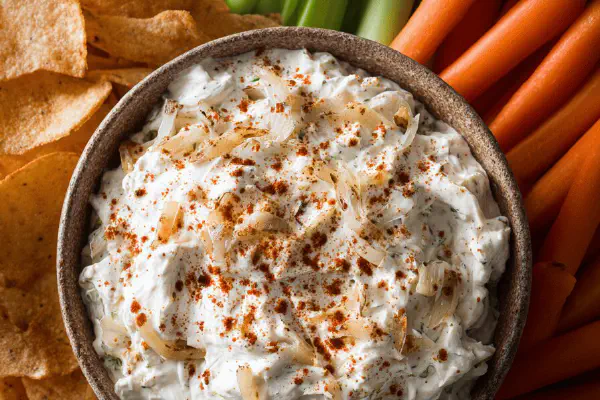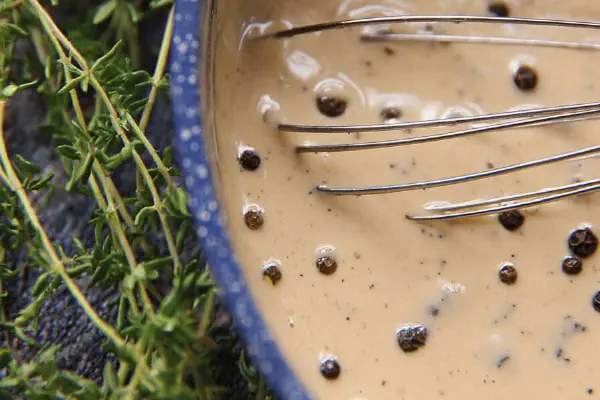Quick Dark Sauce Gravy

By Emma
Certified Culinary Professional
Ingredients
- 1 small yellow onion, finely diced
- 1 garlic clove, minced
- 25 ml butter (1 ½ tbsp)
- 1 can 284 ml caramelized beef broth concentrate
- 1 can 284 ml chicken broth concentrate
- 40 g toasted all-purpose flour (about ¼ cup)
- 5 ml Worcestershire sauce (optional twist)
- 5 ml soy sauce (optional twist)
- Salt and freshly ground black pepper to taste
About the ingredients
Method
- Start by melting butter over medium heat in a heavy saucepan. Toss in onion and garlic. Watch closely — flickering sizzles and gentle golden hints signal patience paying off. Stir often; onions need translucent softness before color deepens, around 8-12 minutes. Avoid scorching; burnt bits kill a sauce’s charm.
- Once onion edges edge toward caramelized, pour in both broths. Listen for instant bubbling and gentle hisses as flavors mingle. Bring to a rolling boil to wake up the condensed broth, then lower heat to maintain a gentle simmer.
- Whisk in toasted flour gradually. It’s crucial to do this evenly to dodge lumps. The sauce starts thin, gradually thickening. Keep stirring, watch viscosity change — thick enough to coat back of spoon but still ladleable, about 5 to 7 minutes. If too thick, splash in water or broth; too thin needs more simmer time.
- Add Worcestershire and soy sauces for a subtle umami lift — deep woods and fermented notes without overwhelming. Season with salt and pepper after tasting; broth concentrates vary wildly in saltiness.
- Strain through a fine sieve to catch onion bits and get that silky texture. This step transforms rustic gravy into something deceptively simple but refined. Taste again. Adjust seasoning while still warm.
- Serve immediately with roasted spiced chicken, turkey, red meats, or slap on fries for a quick poutine drizzle.
- Notes: If no broth concentrates, reduce 750 ml good beef and chicken stock by half to intensify flavors. Butter may be swapped with vegetable oil or bacon fat for richness; garlic can be replaced with shallots for subtle sweetness; flour toasted in a dry pan beforehand locks in nutty aroma and avoids raw flour taste.
Cooking tips
Chef's notes
- 💡 Patience is king. Start low and slow on onion and garlic; watch juices evaporate. Golden means flavors deeper. Burnt edges wreck sauce taste. Stir often but gently. Pan must be heavy to keep even heat yet not scorching.
- 💡 Broth concentrates vary. Taste first—some are salt bombs, others bland. Adjust salt later, never early. If you lack concentrates, use half-reduced homemade stocks; controls sharpness, fat layer, flavor intensity naturally without oversalt.
- 💡 Toasted flour is essential. Dry pan until smell nutty, color barely golden. Pushes flavor beyond thickener to aroma booster and mouthfeel guard. Add warm, whisk fast to prevent lumps—texture hinges on timing not just technique.
- 💡 Season with Worcestershire and soy cautiously. They give umami depth; too much kills brightness and makes sauce heavy. Add off heat or low simmer—letting their aromas infuse slowly without overpowering the base flavors.
- 💡 Strain off solids after thickening. Onion bits tempt rustic style but ruin silkiness. Pour through fine mesh. Skipping this leads to gritty or chunky sauce that breaks mouthfeel illusion. Always taste again; seasoning shifts post-strain.
Common questions
How to know when onion is caramelized?
Look for translucent changing to amber edges. Smell deep sweetness rising. No strong brown or black bits. Watch juices vanish but not scorch. Often 8-12 minutes low heat, stirring regularly.
Can I replace butter with oil?
Yes, vegetable or bacon fat works too. Butter gives creamier mouthfeel, fat adds smokiness or neutrality. Adjust heat lower with oil—burns easier, less milk solids to protect flavors.
Flour lumps forming how fix?
Whisk flour dusted lightly, adding gradually into warm liquid. Stir fast. If lumps appear, strain or push with whisk vigorously. Toasting flour prior helps avoid gritty raw taste but lumps come from rushed mixing mostly.
Best way to store leftovers?
Cool down before fridge. Store sealed tight or freeze if long haul. Reheat gently, low simmer, whisk frequently. Hot rapid bake or microwave breaks emulsions, leads to grainy texture and flavor dulling.



